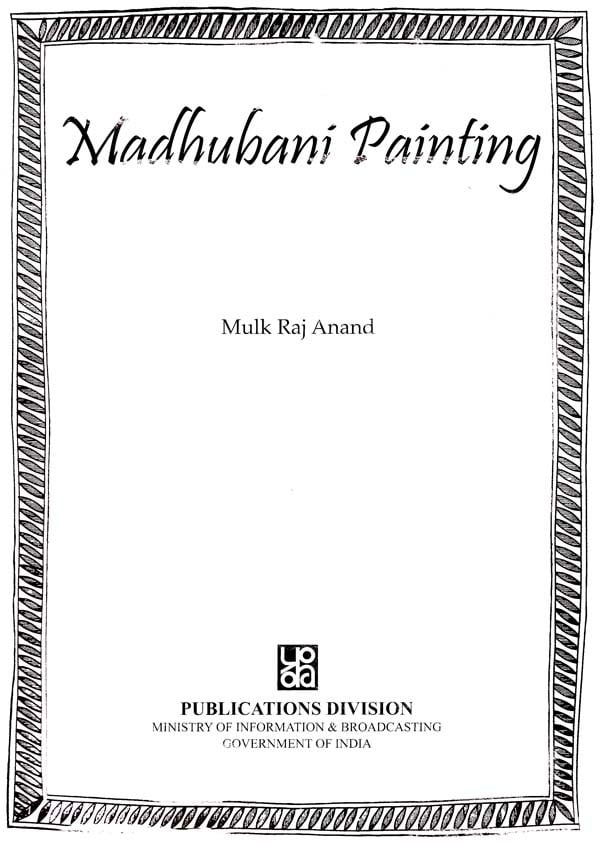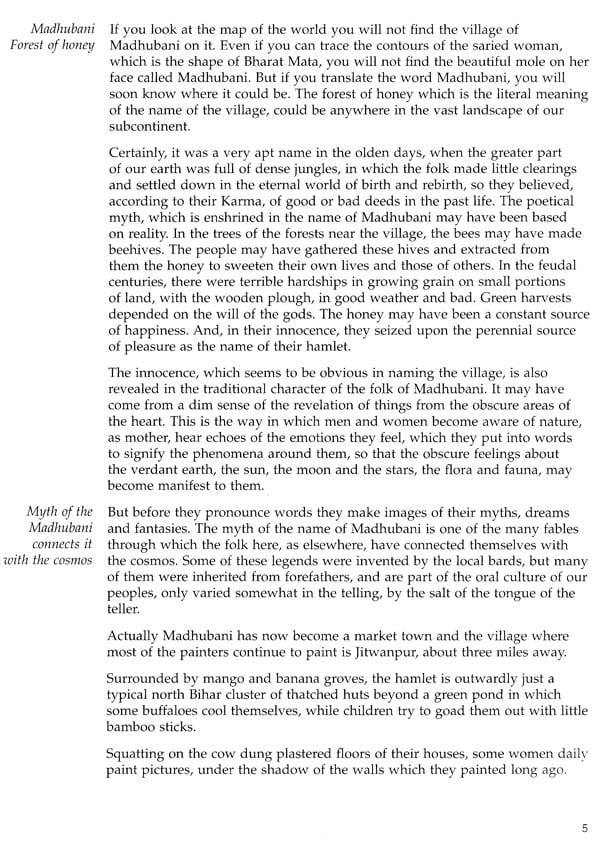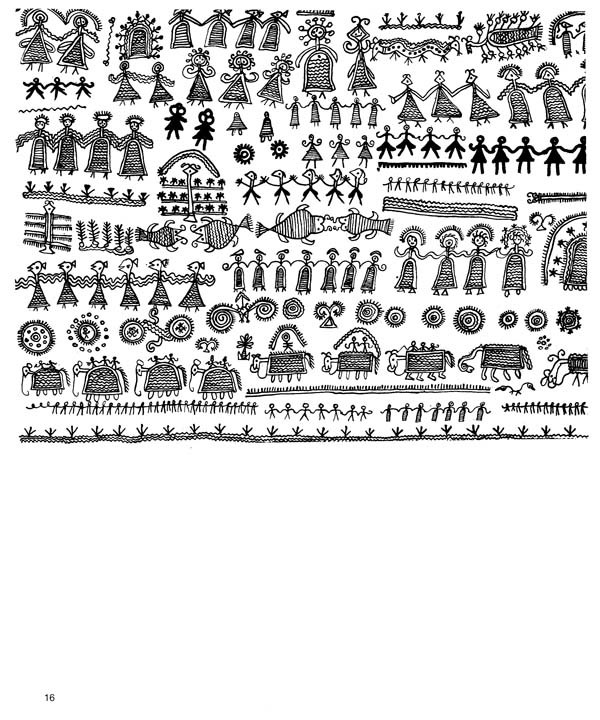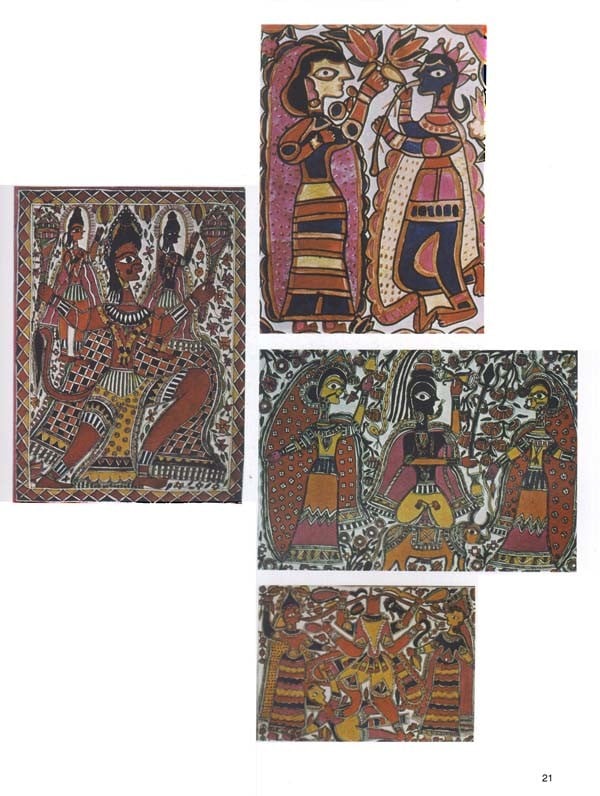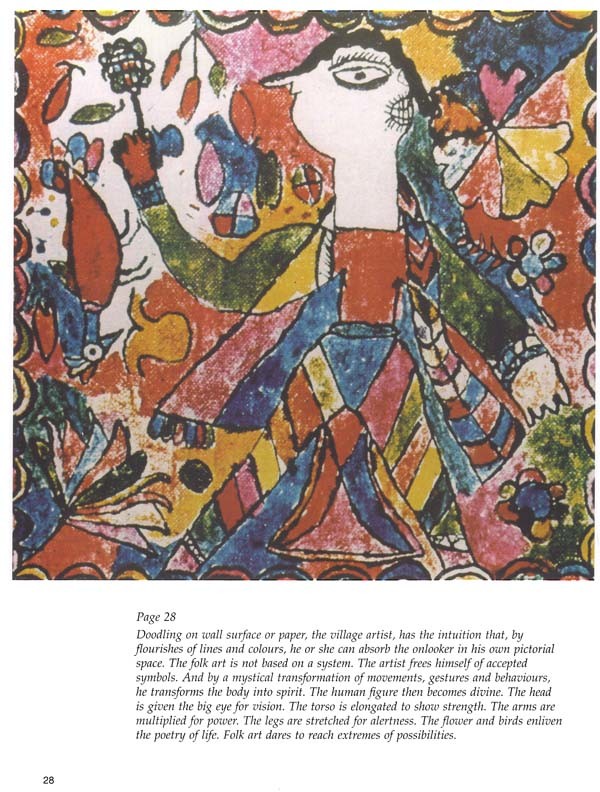
Madhubani Painting
Book Specification
| Item Code: | AZH098 |
| Author: | Mulk Raj Anand |
| Publisher: | Publications Division of Ministry of Information and Broadcasting |
| Language: | English |
| Edition: | 2020 |
| ISBN: | 9789354090615 |
| Pages: | 58 (Throughout B/W and Color Illustrations |
| Cover: | Hardcover |
| Other Details | 11.00x9.00 inch |
| Weight | 540 gm |
Book Description
The art of Madhubani is purposive mythology. Not art in the sense of 'significant form' of the West. The paintings are legends to which the folk turn to pray in the daily ritual. The sources of the folk art of Madhubani lie in the dim areas of silence, of the approximation to the heightened moments of creation itself. By a mystical transformation of brush movements, the artist transforms the bodies into spirits: the flowers and birds enliven paintings that dare to reach the depth.
Squatting on the cow dung plastered floors of their homes, which are surrounded by mango and banana groves beyond a green pond, women daily paint pictures. They have been doing this ritual colour work for generations.
The author, Mulk Raj Anand was a distinguished writer of novels, short stories and critical essays in English, and an art and literary critic. He wrote diverse books on aspects of South Asian culture, and taught in various universities. He was awarded the International Peace Prize in 1953, Padma Bhushan in 1968 and Sahitya Akademi Award in 1971.
Mulk Raj Anand (12 December 1905-28 September 2004) was a distinguished author of novels, short stories and critical essays in English, and an art and literary critic. He is known for his sympathetic portrayal of the lives of the oppressed and poorest members of Indian society. He also wrote diverse books on aspects of South Asian culture, and taught in various universities. In 1946, he founded an art magazine Marg, which brought out the treasures of Indian art in front of the world.
Some of his notable works are Untouchable (1935), Coolie (1936), The Private Life of an Indian Prince (1953), The Village (1939), Across the Black Waters (1939), The Sword and the Sickle (1942), The Hindu View of Art (1933), Persian Painting (1930) and The Indian Theatre (1950).
He was awarded the International Peace Prize in 1953, Padma Bhushan in 1968 and Sahitya Akademi Award in 1971.
**Contents and Sample Pages**
